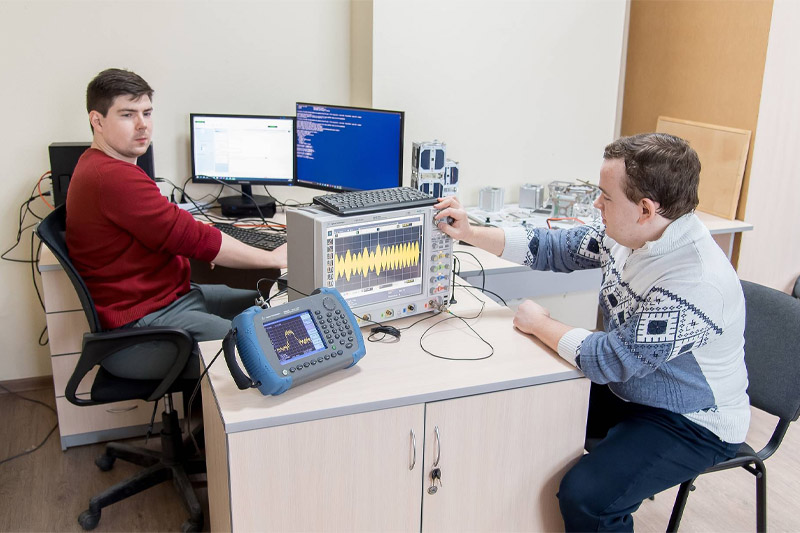Russian scientists create meteor communications system for Arctic

ST. PETERSBURG, March 5. Scientists of the Peter the Great St. Petersburg Polytechnic University created a communications system, where signals are reflected from tails (streaks of light) of the meteors, flying in the Earth’s atmosphere. The invention makes a cost-effective solution allowing transmission of signals to big distances (up to 1,500 km) in the Arctic, where satellite or cellular communications are not available, the project’s participant, Deputy Director of the University’s Higher School for Applied Physics and Space Technology Sergei Zavyalov told TASS.
"Basically, the meteor radio communications are used in areas where regular - cellular or satellite - communications are not available," he said. "The relatively low capacity of about 1 kW is sufficient to transmit the signal to big distances, which is of high demand in the Far North, as quite often no communications are available there. I mean, first of all, settlements in the Far North and the Northern Sea Route. The equipment we have made is ready for trials in the Arctic."
According to another participant in the project, Sergei Makarov, meteor radio communication offers a signal range of up to 1,500 km. Thus, three basic stations would be sufficient to cover the territory of the Russian Arctic with the Northern Sea Route’s waters included.
How meteor communication works
Makarov stressed that space apparatuses, many of which are located on the geosynchronous equatorial orbit (GEO), are unable to provide communications near the poles. This can be achieved through low-orbit space stations. The problem is that taking such a station into space is extremely expensive, and besides, the station would not be able to remain above the pole all the time and it takes it a few hours to circle the Earth.
The Earth, due to its structure, has the shape of a sphere, flattened at the poles, the scientist told TASS. Because of this, the ionosphere’s layers in those zones are much thinner than at the equator, and thus meteorites (both space objects and the waste on the Earth's orbit), burning in the atmosphere, create tails at the poles, which can be used to reflect radio waves.
"The idea of meteor communication appeared back in the 1960s," Makarov said. "Back then, it was unworkable. By using modern receiving and computer equipment, we managed to work out new algorithms to fully use the reflection of signals from meteor tails and to offer reliable communication. At last, we have reached the level when this new equipment is ready for experimental trials."
Since the new communication depends directly on how intensive the meteor flow is, it will have a relatively intermittent nature, the scientist added. On the other hand, on the Earth’s orbit nowadays there are many objects, including waste, which burn down in the atmosphere, leaving streaks of light. Thus, the transmitter may be used to provide an effective system of SOS signals or alerts about natural disasters (for example, waves and tsunamis, if the equipment is installed on a sea beacon).
According to the expert, the methods, similar to those the University’s team has been working on, are used in Canada. Local researchers use meteor communications to watch ice movement in the Arctic. Besides, Japan and China aspire to take a technology niche on the market, even though they do not own polar territories.
The University’s studies first of all meet Russian national interests for the development of the country’s Arctic territories, he continued. Many new settlements as well as port infrastructure are being developed there, including in Yakutia and on the Taimyr Peninsula. Meteor communication stations could be used in air and sea navigation, geological prospecting and functioning of military facilities.
System’s implementation
"The system is not big - it only includes a laptop, an antenna and an amplifier," he said. "It is quite compact, if you compare it with similar foreign stations (like, for example, the Canadian ones). The equipment is not big in size. A person may carry it in a special backpack. We have another advantage. We eye connecting a 3 kW wind generator to the transmitters to supply power to the station. It would be a completely independent system - a quite cheap, compact and environmentally-friendly one. Such systems could be installed throughout the Arctic."
The project’s industrial partner is the Electropribor Research Center (St. Petersburg). Negotiations on the system’s installation are also underway with Yakutia’s Sever Center. Scientists plan to complete all studies and trials within 2021, so that in 2022 the industrial partner could begin serial production of meteor communications stations.
The Peter the Great St. Petersburg Polytechnic University is a leading technical university in Russia. In 2020, it was the 37th in THE University Impact Rankings. The University has a representation in Shanghai and an information center in Madrid. More than 30,000 students study there, including 8,500 foreign citizens.


![$news['icon']](https://hsapst.spbstu.ru/userfiles/images/Media/biomolecular-electronics.jpg)
![$news['icon']](https://hsapst.spbstu.ru/userfiles/images/news/51.jpg)